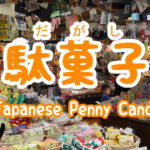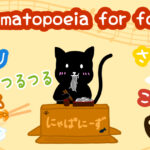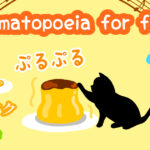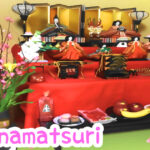-

-
Japanese Culture Japanese Food Japanese Life
Dagashi – All about Japanese penny candies
2021/8/9 Japanese culture, Japanese snack, 日本文化, 駄菓子
You might have had sweet memories in your childhood when you got penny candies from the pocket money that your parents gave you. That excitement when you go home with the candies you got would be unforgettable. Penny candy is called “dagashi (駄菓子(だがし))” in Japanese. Dagashi has a huge variety of types and has a long history. We will introduce Japanese penny candies in this article. Let’s take a look at sweet Japanese memories! What is dagashi 駄菓子(だがし)? Dagashi (駄菓子(だがし)) are cheap candies and snacks for children. They have many varieties and each one is packaged in a colorful wrapping ...
-

-
Japanese onomatopoeia for food ! -Part 2-
2021/3/14 Japanese, Japanese culture, onomatopoeia, オノマトペ, 日本文化, 日本料理, 日本語
Onomatopoeia is great way to express your feelings when you can't use ordinary words. Japanese has more than 4000 onomatopoeia! In our previous article, we shared about onomatopoeia for foods that are really common for Japanese people. Please check the link below if you haven't read it yet! Japanese onomatopoeia for food ! -Part1- - Nyapanese This article is our part 2 for food onomatopoeia. These onomatopoeia are for Japanese unique foods! JustinaWe will also share about onomatopoeia for the taste of food! You can understand how to say spiciness in Japanese onomatopoeia too!Atsuya Japanese onomatopoeia for food つるつる (tsuru-tsuru) ...
-

-
Japanese onomatopoeia for food ! -Part1-
2021/3/7 food, Japanese, Japanese culture, onomatopoeia, オノマトペ, 日本文化, 日本語, 食べ物
Crunch crunch, munch munch. There are many sounds you make when you eat or drink. Words that express sound are called onomatopoeia, and they don't just exist in English! It is said that Japanese actually has 4500 onomatopoeia! But here's the interesting part: they're not just for sounds! Japanese also has onomatopoeia to express motions, looks, condition, or how you feel. In regards to food, these can be jiggling or melty things. The second type of onomatopoeia are called mimetic words, or ideophones. They represent something that has no sound. For the rest of this article, we will refer to ...
-

-
What do Japanese do on Hinamatsuri (Girl's day)? 【Customs and Origin】
2021/3/1 HInamatsuri, Japanese culture, お内裏様, お雛様, ひな祭り, 三人官女, 五人囃子, 右大臣, 左大臣
Hinamatsuri (ひな祭り), which is called Doll's day or Girl’s Day in English, is one Japanese spring event on March 3rd. People celebrate and pray for girls' health and happiness. It is custom to display Japanese ornamental dolls on a tiered stand with a red carpet-like material and have a special meal with one's family. Justinaひな (hina) means doll in ancient Japanese , and 祭り (matsuri) means festival! We'll share not only what Hinamatsuri is like but also its origin and the history of Hinamatsuri!Atsuya Hinamatsuri (ひな祭り) is a calm spring festival with a special meal and beautiful Japanese dolls! Hinamatsuri ...
-

-
What is Setsubun like? One of the Japanese events in spring!
2021/5/18 demon, Japanese culture, setsubun, throwing beans, 日本文化, 節分, 豆まき, 鬼
“鬼(おに)は外(そと)!福(ふく)は内(うち)!(Demons out ! Luck in!)” In the Setsubun festival, Japanese people say 鬼(おに)は外(そと)!福(ふく)は内(うち)!and throw beans out opened doors and windows to drive away evil spirits and bring in good fortune. 節分(せつぶん) (Setsubun) is one of the most well-known spring events for Japanese people. In this article, you will understand how to enjoy Setsubun and all about Setsubun’s rules, culture, and history! Justina I know about throwing beans during Setsubun! Actually, Japanese people do many things other than throwing beans during Setsubun! Atsuya What does 節分(せつぶん) (Setsubun) mean? The original meaning of 節分(せつぶん) (Setsubun) is “the day before the equinox or ...
